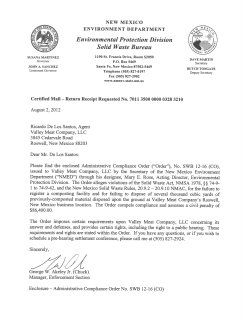In June, Wild Hoofbeats (and nearly 200 other interested people) travelled near El Dorado, Kansas to tour Bob Buford's Shadow 7 contract holding facility, the only LTH facility tour scheduled by the BLM for 2012.
Long Term Holding Tour in Kansas
The following is a quote from her blog:
"Paul McGuire from Oklahoma told me that only 1000-1500 horses were sold per year from long term holding, but when I had an opportunity to speak to Bob Buford myself, those figures seem low. He told me had had just sent 200 to a couple of different states, and this last year had sent 1700 to Hutchison Correctional Facility. He told me that the mortality rate is about 3 – 4% and the horses can live to 25 or even 30, which is a good 5-10 more years than in the wild."
McGuire's comments got me to thinking. I spoke to Bea Ward earlier this year about horses being sold out of their long term holding facilities (see bottom of linked page for numbers sold 2009 - 2012) and what she told me doesn't jive with what McGuire is to have said. Ms. Ward told me that far fewer are sold yearly and also said that few had been sold since the LTH horses were found on Texas Kill buyer's truck heading southbound to Mexico for slaughter. Ms. Ward said sales were pretty much on pause at the time until Sally Spencer was able to re-write and toughen up their sales agreement so that incidents like this don't re-occur. Now a good number of these sales are sold to Extreme Mustang trainers but some go to a place in Colorado. I asked Bea for some more information on the Colorado buyer but she couldn't tell me more. It all seemed like a dead end so I didn't do any more follow up.
However ......
Some of the discrepancy between the web site numbers and McGuire's numbers I can chalk up to McGuire probably "estimating", but between what he said and what Buford said clearly is cause for alarm, especially if you consider 1700 horses transferred out of one facility and extrapolate that to the nearly 20 other LTH facilities. I'm not saying all facilities transfer horses, but even if a few of them do, the logistics would be a nightmare. How do you ever account for the numbers being moved or where the horses finally end up because that is the real concern. Transfer them enough times and even the best software might not be able to keep track. Remember sales are not transfers, so though we have the sales numbers for the past few years, we don't know how many horses are transferred from LTH facility to LTH facility (or even why they are transferred).
Here is where I really start to have questions. Buford says he transferred 1700 horses to Hutchison (prison maintenance facility). Please note the numbers for Hutchison remain essentially unchanged throughout 2011 and into 2012 and that numbers is around 290 horses, give or take.
Here is the current BLM facility report for June, 2012
(also here http://www.blm.gov/pgdata/etc/medialib/blm/wo/Planning_and_Renewable_Resources/wild_horses_and_burros/statistics_and_maps/holding__adoption.Par.95446.File.dat/augfacrept.pdf)
The following links take you to facility reports for 2011. I have yet to learn how to make these documents larger in Photobucket but when I do will update this page. I don't have the facility report for December, 2010 to compare but don't know if it's all that important to this blog.
BLM facility report for July, 2011
BLM facility report for December, 2011
You see essentially the same number of horses in Hutchison currently as are in the previous facility reports for July and December, 2011 (less than 300 on all three reports) which I downloaded from the BLM site or were provided by BLM staff at my request. Please note that the capacity at Hutchison is 350 horses. Would it even be possible to move 1700 horses in and out in one year and have the number stay basically unchanged three consecutive facility reports?
So, was Buford misquoted? (Unlikely). Was he wrong about where he had sent the horses? That seems to be so since Hutchison didn't received anything like 1700 horses last year. Where did they go?
I will repost when I get a response on this from the BLM (right).

PHOTO BY GREG BARNETTE // BUY THIS PHOTO
Volunteers Alaina Welsh (from left), 17; Charissa Gurnea, 22; and Ashley Lawrence, 22, work with horses Friday at the Wild Horse Sanctuary in Shingletown.

PHOTO BY GREG BARNETTE // BUY THIS PHOTO
Charissa Gurnea works with Wesley at Wild Horse Sanctuary in Shingletown.
SHINGLETOWN — Dianne Nelson likes to call it a "friendraiser."
The open house she's held annually at the Wild Horse Sanctuary for the past nine years happens again Saturday, and she's looking forward to meeting new people as well as seeing familiar faces.
It's also part benefit for the 300 or so wild mustangs and burros she shelters on her 5,000-acre spread.
Nelson planted 30 acres of hay this year to help offset higher prices for the 300 tons she purchases each year. She also cleared an additional 30 acres of brush to plant native grasses in the fall.
....
But for now, anyway, she's having a party. Highlights of Saturday's free event include docent-led walks to view the mustangs and burros up close and free horse rides for children 10 and younger.
(Please see above link for the rest of the article.)
(Please see above link for the rest of the article.)


